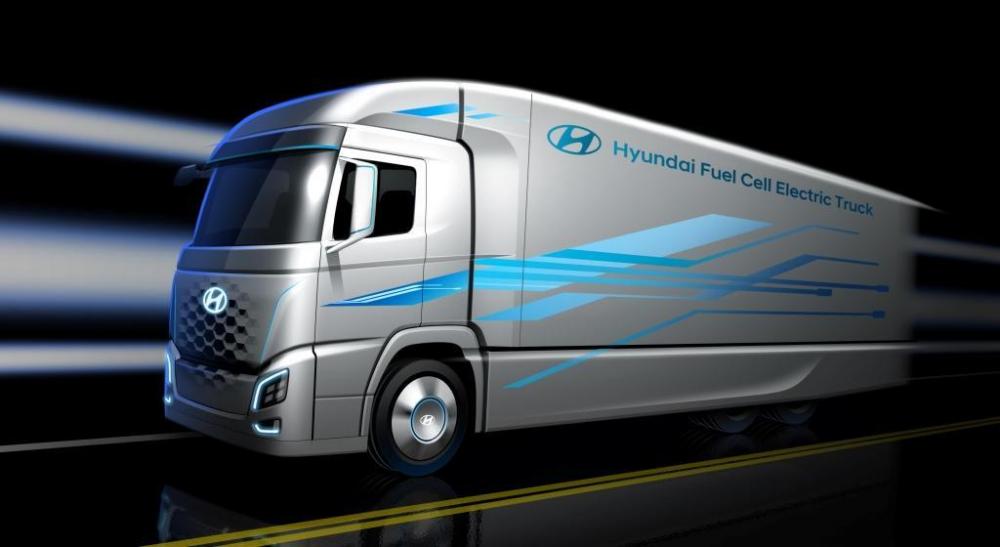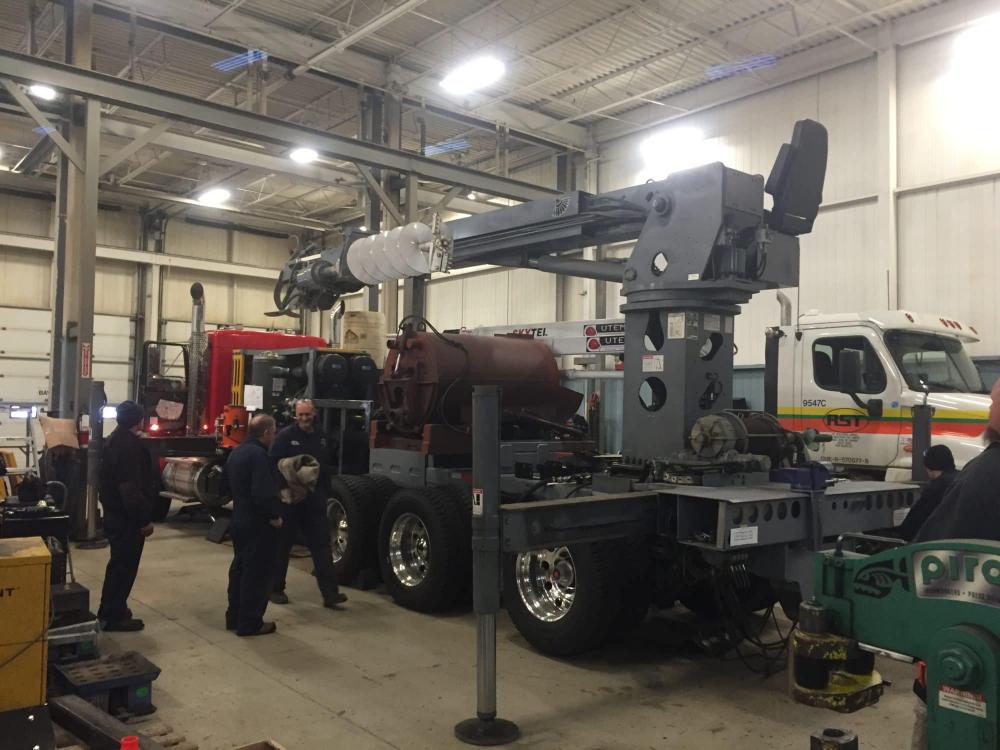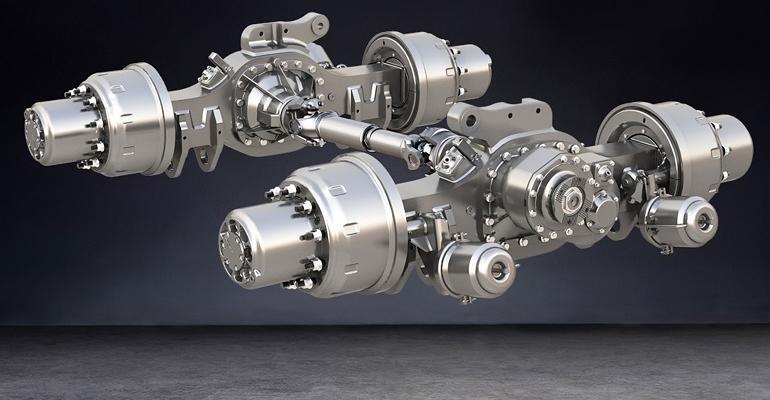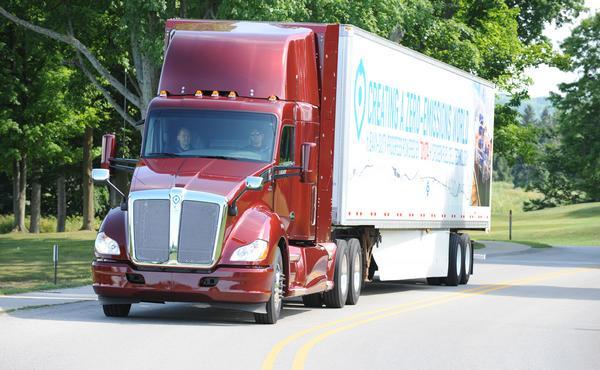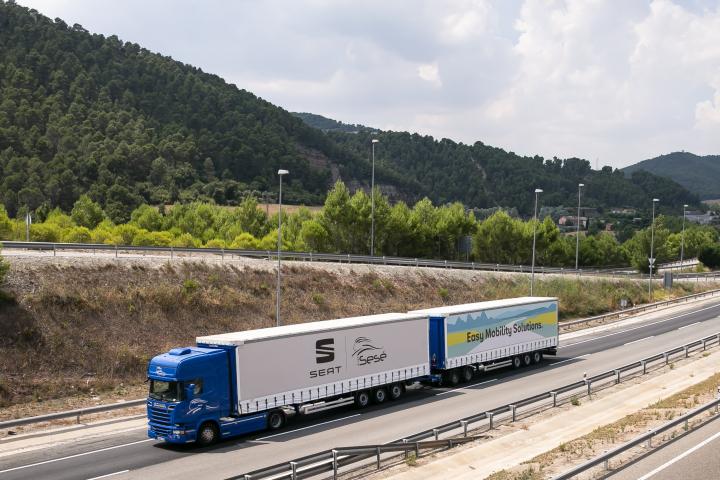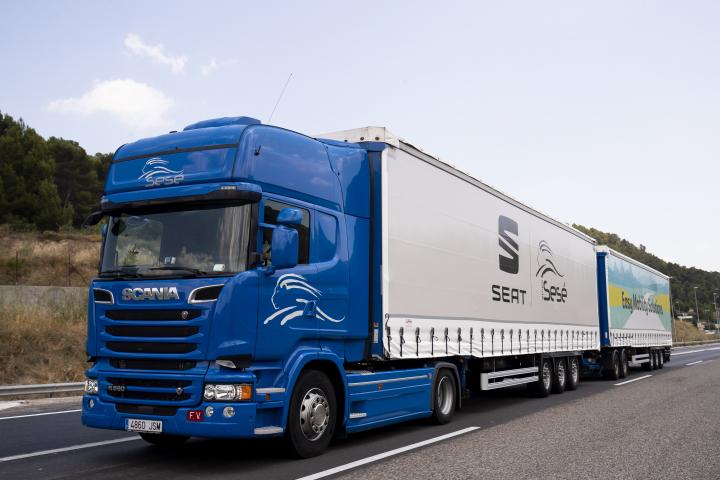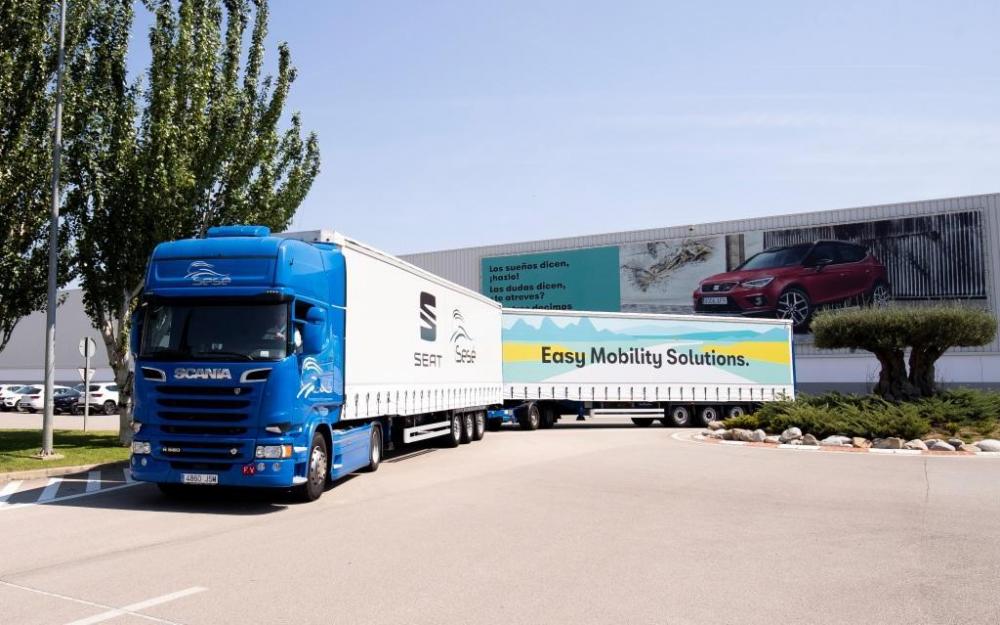
kscarbel2
Moderator-
Posts
18,550 -
Joined
-
Days Won
112
Content Type
Profiles
Forums
Gallery
Events
Blogs
BMT Wiki
Collections
Store
Everything posted by kscarbel2
-
Yours, with the three protruding dimples, is not factory. A 32MK53P1 never had them. Call Watt's Mack at 1-888-304-6225 and ask for a 32MK53 (black painted) or 32MK53P4 (chrome).
-
Critics push U.S. to help Europe by taking more refugees
kscarbel2 replied to kscarbel2's topic in Odds and Ends
I again suggest, political parties have no purpose whatsoever and should be banned. Rather than compliment government, parties only serve to convolute and corrupt. Each elected government representative, an employee of his state's people, should focus on representing the will and desire of those people.....and nothing more. Draining the swamp in DC is kind of like the CPC removing all the corrupt cadres......once done there would be no one left. -
-
The fuel cell electric truck will be launched in 2019 ● The truck boasts a distinctive design befitting of an eco-friendly truck ● Plans for the European market to be unveiled at IAA Commercial Vehicles 2018 SEOUL, Sept. 13, 2018 — Hyundai Motor today presented a first look at a render image of a new truck with fuel cell powertrain which is set to be launched in 2019. After the ix35 Fuel Cell and the NEXO, Hyundai presents yet another milestone for its leadership in fuel cell technology with the presentation of the fuel cell electric truck. Fuel cell electric truck boasts distinctive design which sets it apart from other Hyundai commercial vehicle line-up. The truck aims at simple and clean design which is also aerodynamically efficient with a spoiler and side protector. The front grille symbolizes hydrogen through geometric shapes, giving the vehicle a unique and powerful look. The vehicle emanates an eco-friendly look with an iconic blue color application and a bold side body graphic on the container, which visualizes its dynamic character. During the IAA Commercial Vehicles 2018 taking place in Hanover Germany, Hyundai will announce the future plans for introducing the fuel cell electric truck in the European eco-friendly commercial vehicle market next year as well revealing vehicle specification. Hyundai Motor also recently completed South Korea’s first domestic highway journey with an autonomously navigated semi-trailer truck. Hyundai’s Xcient truck drove approximately 40km on the highway between Uiwang and Incheon, carrying large semi-trailer simulating cargo transportation, showcasing Hyundai’s innovative technological advancement in future mobility. .
-
MAN Engines sets new standard with V12-2000 and V8-1300 yacht engines
kscarbel2 replied to kscarbel2's topic in Trucking News
I'm biased, but they're both extremely good. The Scania V8 architecture allowed it to evolve forward and meet all current emissions standards. MAN decided to introduce the 15.2-litre D38 inline six, which is a wonderful powerplant. Drivers love the sound and performance of the Scania V8, and accountants smile approvingly at its fuel economy. -
VW Board Preparing Next Steps for Truck Unit Listing
kscarbel2 replied to kscarbel2's topic in Trucking News
Jim, if they buy, I imagine it would be a single purchase. As said above, it is possible that Troy Clarke and the board don't want to sell, or VW (Traton) would be satisfied with equity and joint-venture projects. I think they'd rather own, buy out as Daimler and Volvo did Freightliner and Mack. -
Cadillac puts diesels on hold Jens Meiners, Automotive News / September 15, 2018 SEATTLE — Cadillac has put diesel engine development on the back burner, citing the industry's rapid shift to electric vehicles. Cadillac President Steve Carlisle, speaking last week at the XT4 compact crossover launch here, said the brand is re-evaluating diesel technology. "We have been working on diesel, but the markets may be changing more quickly than we anticipated," he said. "Going forward, we will focus on electrification." Cadillac had been working on four- and six-cylinder diesel engines for several years as part of its push into Europe, and had planned to offer diesel-powered models in the U.S. as well. The XT4 was to have been offered with a diesel by 2020 or before, and Cadillac had expected to launch diesel engines in more models. This may still happen, but for now, Carlisle confirmed the program is on hold. In 2015, the Volkswagen diesel scandal caught Cadillac flat-footed, but executives felt it had progressed too far to kill the program. It hit another snag last year when General Motors sold Opel, a development partner for the engines. But despite delays, the program continued. Now the strategy is under intense scrutiny. Still, Carlisle maintained that diesel engines will play a role in the auto business, especially in trucks, for a long time. The future of the diesel in the U.S. is uncertain. Volkswagen, Audi, Porsche and Mercedes-Benz have pulled their offerings, but BMW continues to sell diesels. Diesel models have been launched by Jaguar Land Rover, and Kia and Mazda have announced diesels. GM sells the Chevrolet Cruze and Equinox, as well as the GMC Terrain, with diesel engines.
-
Rugged Comfort: Reviewing a Canadian-spec’d T880S
kscarbel2 replied to kscarbel2's topic in Trucking News
But your SARs are much more substantial, higher quality trucks. -
Eric Berard, Today's Trucking / September 13, 2018 MISSISSAUGA, Ont. — Being in the pole position allows you to be ahead of the pack. Yet earning such an enviable spot takes a lot of work, brainstorming, and the open-mindedness to surround yourself only with skilled support. Nick Knapp understood those demands. As director of field operations for KTI, a sub-contracting company for utility authorities such as power or telephone companies around Georgetown, Conn., Knapp knew he could optimize the tasks of digging post holes, water vacuuming, rock hammering, pole planting and stabilizing, and aerial wire rigging. He just needed a super all-in-one utility truck to replace the multiple units he was using for this variety of tasks. After a couple of preliminary sketches on proverbial cocktail napkins, Knapp – who runs the family business with his dad, Ed — reached out to body builders in the northeastern U.S., looking as far afield as the Midwest to find someone who could make his vision a reality. The Americans he spoke to basically said it was impossible. “They felt this truck was so out of the box, nobody wanted to touch it. They wanted to sell us a product that was already built and packaged because no one was interested in taking on that big of a product and not knowing if the end result would even be something that would work,” says Knapp. Browsing the web, he found Drive Products in a Mississauga, Ont. “They had no problem with taking on the project. So we sent them up the rig,” he says. At that stage, the “rig” was a T800 Kenworth cab chassis truck with a Cummins ISX15 500V (500 hp and 1,850 lb-ft of torque @ 1,200 rpm) coupled to an 18-speed Eaton-Fuller manual transmission, explains John Diodati, Drive Products’ operations director. But a lot of work still had to be done, because Knapp’s wish list was quite extensive. He needed hydraulics for the auger, crane and other tools. And compressed air to run the hammer if a rock formation prevented regular auger drilling, to vacuum unwanted water from pole holes into an onboard 500-US-gallon tank, and to power the tamps used to firmly hold the poles in place. “To get a compressor that big [1,000 cubic feet per minute], with that much power, it would be gigantic. What Drive Products did was, instead of buying a complete unit, [they] bought the air module with no motor. Normally they come attached with a gigantic diesel motor. They took the power directly from the motor of the truck through the split-shaft PTO and the transfer case to power the air compressor. It saves me more than 50% of deck space,” Knapp said. Eliminating the additional engine to power the Atlas Copco compressor also saved a lot of weight on this mighty machine that weighs in at 76,000 lb. Installing a third rear axle bumped the truck’s GVW from 60,000 to 80,000 lb. A Canadian crew of a dozen hands-on workers and three engineers took care of installing two OMSI transfer cases, the aerial bucket, a custom driveline, hydraulics, and a water tank among other features, says Diodati. Ensuring proper driveline angles was one of the biggest technical challenges to overcome. The unique truck’s versatility – it’s also equipped with four outriggers and a 60,000-lb. winch at the rear – realizes substantial savings. “I can go out with one driver-operator and a ground man. Two men and this truck can do the same job as it would normally take a minimum of four men, all of which would need to have a CDL. Also, by eliminating all those other trucks, now I’m only paying for insurance, registration and taxes on one vehicle versus four or five trucks,” Knapp says. In addition to the optimized productivity, he points out that maintenance is simpler and cheaper with only one power unit to take care of, even if the initial purchase price can be “a shocker”. Additional units are planned, says self-taught designer Knapp, who dubbed his heavyweight baby “Canada Super Digger”. “There will definitely be more to come, now that we got all the quirks worked out of the engineering side,” he says, adding that discussions are underway about patents since more utility professionals could well be interested in buying Canada Super Diggers. .
-
VW Board Preparing Next Steps for Truck Unit Listing
kscarbel2 replied to kscarbel2's topic in Trucking News
VW Board Is Preparing Next Steps for Truck Unit Listing Bloomberg / September 14, 2018 Volkswagen AG’s board is working toward a decision to list its heavy-truck division, a move that would generate fresh funds for its bid to challenge global leaders Daimler AG and Volvo AB, according to people familiar with the matter. VW’s supervisory board plans to discuss the matter early next week, and the truck unit will host a capital markets day later in the week at the sidelines of the commercial-vehicle show in Hanover, Germany, said the people, who asked not to be identified as the talks aren’t public. VW intends to list the truck unit’s shares next year, but the exact timing will depend on market conditions, they said. While Volkswagen hasn’t formally mandated banks yet, Goldman Sachs Group Inc. and Bank of America Corp. are in a good position to become global coordinators for Traton’s listing, according to people familiar with the matter. Volkswagen may also hire a third lead bank on the transaction, another person said. Representatives for VW and the banks declined to comment. The trucks business has a value of about 28.5 billion euros ($33.3 billion), according to Bloomberg Intelligence analyst Michael Dean. It generated revenue of about 24 billion euros last year, with Europe accounting for 73 percent of sales. During a recent meeting with investors in London, VW Chief Financial Officer Frank Witter’s tone concerning the IPO “was far more reserved due to the sharp revision of trucks multiples,” Evercore ISI analyst Arndt Ellinghorst said in a note to clients last week. The threat of trade barriers and lower cyclical demand for the vehicles has hurt the division’s valuation. VW shares rose 2.3 percent to 142 euros in Frankfurt trading at 3:37 p.m. The stock has declined 16 percent this year. Structural Shift The business has been turned into a stock corporation and was renamed Traton AG this year to clearly distinguish it from VW’s larger passenger-car division. Key VW stakeholders -- including the German state of Lower Saxony, VW’s second-largest shareholder with a 20 percent stake, and the company’s powerful labor unions -- have backed the project. VW will retain a controlling stake in Traton. The IPO of the unit -- which comprises the highly profitable Swedish Scania brand, Germany’s MAN truck and bus marque as well as a business in Brazil -- marks the most significant structural shift for VW so far as it undergoes a major overhaul. New Chief Executive Officer Herbert Diess is working to make the world’s largest automaker less centralized and more agile by 2025 to tackle a seismic industry shift toward electric vehicles and new digital services. Bigger Payload German rival Daimler AG is adopting a new corporate structure as well that will grant its truck business more independence, but executives have remained tight-lipped so far about a possible IPO. VW trucks chief Andreas Renschler has been the key driver behind the manufacturer’s intensified effort to improve cooperation between Scania and MAN and expand his division’s footprint outside Europe. He joined Volkswagen in 2015 after almost a decade of running Daimler’s truck unit, the world’s biggest commercial-vehicle manufacturer by revenue. A successful share sale would generate funds for Renschler’s push to catch up with rivals in terms of global reach. Earlier this year the manufacturer signed a cooperation agreement with Toyota Motor Corp.’s Hino division and the company is also looking to increase its presence in China. Compared to Daimler, which owns the Freightliner truck brand, or Volvo, which builds Mack models, the VW division has only recently gained a foothold in North America, with the purchase two years ago of a stake in U.S. peer Navistar International Corp. The company said in April that lifting the stake in Navistar, including a possible acquisition, would be an option. -
Fleet Owner / September 12, 2018 The Federal Motor Carrier Safety Administration (FMCSA) has exempted motor carriers and drivers involved in Hurricane Florence relief efforts in 13 states and the District of Columbia from Hours of Service and other parts of the Federal Motor Carrier Safety Regulations, or FMCSRs, in an extended regional emergency declaration. The declaration includes Delaware, the District of Columbia, Florida, Georgia, Kentucky, Maryland, New Jersey, New York, North Carolina, Pennsylvania, South Carolina, Tennessee, Virginia, and West Virginia. The exemption covers Parts 390 through 399 of the FMCSRs, which includes HOS rules, general safety rules, maintenance requirements, and more. "Such emergency is in response to Hurricane Florence and its anticipated effects on people and property, including the immediate threat to human life or public welfare from high winds, heavy rains, high surf, storm surge and flooding," FMCSA stated in its announcement. The exemption specifically applies to motor carriers and drivers providing direct assistance for the emergency in the affected states and jurisdictions in direct support of relief efforts related to Hurricane Florence. Providing "direct assistance" means: —Supporting emergency relief efforts transporting supplies, equipment, fuel and people into and from the affected states and jurisdictions, or —Providing other assistance in the form of emergency services during the emergency in the affected states and jurisdictions from Hurricane Florence. The exemption no longer applies when: —A driver or commercial motor vehicle is used in interstate commerce to transport cargo or to provide services not directly supporting the emergency relief effort, or —When the motor carrier dispatches a driver or commercial motor vehicle to another location to begin operations in commerce.
-
Transport Topics / September 14, 2018 Volkswagen AG’s board is working toward a decision to list its heavy-truck division, a move that would generate fresh funds for its bid to challenge global leaders Daimler AG and Volvo AB, according to people familiar with the matter. VW’s supervisory board plans to discuss the matter early the week of Sept. 17, and the truck unit will host a capital markets day later in the week at the sidelines of the commercial vehicle show in Hanover, Germany, said the people, who asked not to be identified as the talks aren’t public. VW intends to list the truck unit’s shares next year, but the timing will depend on market conditions, they said. While Volkswagen hasn’t formally mandated banks yet, Goldman Sachs Group Inc. and Bank of America Corp. are in a good position to become global coordinators for Traton’s listing, according to people familiar with the matter. Volkswagen also may hire a third lead bank on the transaction, another person said. Representatives for VW and the banks declined to comment. The business has been turned into a stock corporation and was renamed Traton AG this year to clearly distinguish it from VW’s larger passenger-car division. Key VW stakeholders — including the German state of Lower Saxony, VW’s second-largest shareholder with a 20% stake, and the company’s powerful labor unions — have backed the project. The initial public offering of the unit — which is made up of the highly profitable Swedish Scania brand, Germany’s MAN truck and bus marque as well as a business in Brazil — marks the most significant structural shift for VW so far as it undergoes a major overhaul. New CEO Herbert Diess is working to make the world’s largest automaker less centralized and more agile by 2025 to tackle a seismic industry shift toward electric vehicles and new digital services. German rival Daimler AG is adopting a new corporate structure as well that will grant its truck business more independence, but executives have remained tight-lipped so far about a possible IPO. VW trucks chief Andreas Renschler has been the key driver behind the manufacturer’s intensified effort to improve cooperation between Scania and MAN and expand his division’s footprint outside Europe. He joined Volkswagen in 2015 after almost a decade of running Daimler’s truck unit, the world’s biggest commercial-vehicle manufacturer by revenue. A successful share sale would generate funds for Renschler’s push to catch up with rivals in terms of global reach. Earlier this year, the manufacturer signed a cooperation agreement with Toyota Motor Corp.’s Hino division, and the company also is looking to increase its presence in China. Compared with Daimler, which owns the Freightliner truck brand, or Volvo, which builds Mack models, the VW division only recently has gained a foothold in North America, with the purchase two years ago of a stake in U.S. peer Navistar International Corp. The company said in April that lifting the stake in Navistar, including a possible acquisition, would be an option.
-
Meritor expands options for P600 planetary axles Trailer-Body Builders / September 14, 2018 Meritor recently made its award-winning P600 planetary axles available with optional five-planet wheel-ends and the ability to configure the axles for use with a central tire inflation system (CTIS). The optional five-planet wheel-ends allow a 20 percent higher gross combined axle weight rating (GCWR) over the four-planet version and feature integrated cooling technology to reduce axle operating temperatures. With CTIS configuration, drivers can maintain and adjust tire pressure for enhanced performance in varying conditions. “Heavy-haul customers are embracing the P600 series axles for outstanding performance, capabilities and best-in-class features,” said Steven Luepke, director of off-highway for Meritor. “Five-planet wheel-ends and CTIS compatibility reinforce Meritor’s continued development of solutions for heavy-haul, oilfield, logging and mining applications.” San Francisco-based Bigge Crane and Rigging Co, one of the largest crane rental, crane sales and project services companies in the country, installed Meritor P600 tandem axles on several heavy-haul tractors to maximize capacity and reduce total cost of ownership, Meritor said. “The five-planet P600 axles work seamlessly with our existing trucks and powertrains, making the integration process efficient,” said Vaughn Hersey, senior project engineer for Bigge Crane and Rigging Co. “Meritor has clearly demonstrated its understanding of the particular needs that are inherent to heavy-transport projects, and we’re pleased with the performance, power and durability we’ve seen.” Recognized as a 2015 Top 20 Product by Heavy-Duty Trucking, the P600 tridem configuration was also named one of OEM Off-Highway magazine’s Top 10 New Products of 2017 − the only axle to receive this recognition. . .
-
Toyota Explores Heavy Truck Hydrogen Fuel Cell Application
kscarbel2 replied to kscarbel2's topic in Trucking News
The lead US truckmaker partnering with the lead global carmaker. Noteworthy. -
Toyota Explores Heavy Truck Hydrogen Fuel Cell Application
kscarbel2 replied to kscarbel2's topic in Trucking News
Toyota, 3 partners to launch hydrogen fuel cell freight project Anisa Jibrell, Automotive News / September 14, 2018 Toyota Motor North America is partnering with the Port of Los Angeles, Kenworth and Shell to launch a zero-emission, hydrogen fuel cell freight project under which it will supply powertrains and provide operational support. Toyota and Kenworth, owned by Paccar Inc., of Bellevue, Wash., will develop 10 zero-emission hydrogen fuel cell trucks, the automaker said Friday in a statement. The automaker will provide fuel cell stacks and tanks, batteries and the electric motors that will be used in Kenworth's Class 8 trucks, Toyota spokesman Brian Lyons told Automotive News. The Port of Los Angeles said Friday that it was preliminarily awarded $41 million from the California Air Resources Board for the project, which is expected to reduce emissions by 465 metric tons of greenhouse gases. The cost of the project's first phase is $82.6 million, 50.2 percent of which will be funded by the partners. According to the grant application, the project will provide "direct localized emission reductions in designated disadvantaged communities" in the Los Angeles area, including Ontario and Wilmington, Calif., and the surrounding communities of San Pedro and Long Beach, Calif. Toyota Logistics Services will operate zero-emission forklifts and oversee Toyota Transport, which will operate the hydrogen fuel cell trucks, the application says. The proposal was developed by the four partners, but the Port of Los Angeles is listed as the lead applicant. The second phase of the project involves setting up two hydrogen fuel stations, operated by Shell, in Ontario and Wilmington. The new stations, along with three at Toyota operations around Los Angeles, will create a fueling network to transport goods from "shore to store." The last phase entails the use of zero-emission technology in off-road and warehouse equipment. For example, two zero-emission yard tractors will be used at the Port of Hueneme about 65 miles northwest of Los Angeles. The partners expect CARB to officially award the grant by year end, Lyons said. The project is in line with Toyota's plans to cut carbon dioxide emissions from its Toyota Logistics center at the Port of Long Beach by 2050. In July at the CAR Management Briefing Seminars in Traverse City, Mich., the automaker unveiled a second generation of its proposed hydrogen fuel cell semitruck, known as Project Portal 2.0. . -
Mark, will you be attending the BMT Investors winter retreat conference in Rio next January?
-
The fleets may hold trucks longer, but I predict no longer than 5 years. I expect most fleets to lean more and more on warranty, replacing trucks at the end of the warranty period. The used truck buyer will be seeing nicer offerings, as in Europe.
-
MAN Engines sets new standard with V12-2000 and V8-1300 yacht engines
kscarbel2 replied to kscarbel2's topic in Trucking News
Yes, the 16.2-litre was offered in the TGX. . . -
Rugged Comfort: Reviewing a Canadian-spec’d T880S
kscarbel2 replied to kscarbel2's topic in Trucking News
Interesting spec.....beautiful truck. -
NAV is one of the BMT Fund's* major holdings. The board expects it to outperform through 2019. * Closed to new investors.
-
NAV earnings conference call 6-Sep-18 https://finance.yahoo.com/news/edited-transcript-nav-earnings-conference-181746949.html The alliance with Volkswagen Truck & Bus, now the TRATON Group, proceeds according to plan as we progress with the procurement joint venture and settle in on an array of exciting technology projects. Given Q3 performance and the strong truck market, we will again increase guidance for 2018. And Walter will provide the details in a minute. And last but not least, although we normally talk about the coming year on the December call, I'd like to provide some early insight. We are bullish on 2019, and we believe that it will look a lot like 2018 with Class 6 to 8 trucks and buses in our core markets coming in, in a range of 385,000 to 415,000 units. Class 8 was in those numbers in the range of 255,000 to 285,000 trucks. First, let's talk orders. GDP growth in Q2 was 4.1%, the strongest quarter since Q3 of 2014. In July, the Consumer Confidence Index rose to 127.4, the highest level since 2000. And year-to-date, the ISM Purchasing Managers Index is well above 50, the highest level since 2004. These conditions support fleet utilization, higher freight rates and improved carrier profits. Look, it's just a great time to be in the truck business. July was a record month for Class 8 orders at over 52,000 units. These numbers have created industry backlogs into Q2 of 2019. So we're now questioning if all these orders will be built. Are customers placing orders with several OEMs, ready to cancel one if the other is delivered first? Or how many orders are placeholders or slots reserved for stock units that can be moved out or canceled at a later date? These are all good questions. Look, at Navistar, we attempt to manage the reporting of orders as accurately as possible. July was a good order month for us as well. We don't expect a lot of cancellations. Let me tell you why. In the third quarter, our core market net orders were up 90% year-over-year. July was Navistar's highest order receipt month in more than a decade. Navistar's order share grew to 18%. At the end of Q3, Navistar is the only OEM to have grown Class 8 retail share during the fiscal year. In the third quarter, we achieved strong year-over-year growth in Class 8 heavy retail market share, thanks to the performance of the LT Series on highway truck and the 12.4-liter A26 engine. The company's share of the 13-liter heavy registrations more than doubled year-over-year through June 2018. And this did not detract from the company's 15-liter share, which also grew during that time frame. July was the first big month for orders for the new MV Series medium-duty truck as many dealers sold down the old DuraStar and now need to restock. The MV is generating real excitement. And through July, our order receipts in medium were up by a percentage point year-to-date and the July order share in Class 6 and 7 was 38%. So we took in a lot of orders in Q3, July in particular, yet incidental order cancellations have remained very stable for the last 18 months, and we don't see it changing much going forward. We expect to build the units in our backlog. In summary, the current strong economy and order backlog support a strong truck market for the remainder of the year and well into 2019. And although Q3 performance is impacted by supplier constraints, we continue to monitor the supply base very closely to avoid major disruptions. We are expecting a strong Q4. And as such, we're increasing guidance. The LT and the LT with the A26 is gaining share in the market. Our order share in the new MV medium truck is growing and all International trucks are delivering the best uptime for our customers that anyone can remember. And now we're taking orders for the new Class 4/5 CV Series, which launches before the end of the calendar year. We believe 2019 will be another very good year for the industry and for Navistar. Navistar President & CEO Troy Clarke
-
Testing twintrailers for environmental gains
kscarbel2 replied to kscarbel2's topic in Trucking News
Efficient haulage. -
Scania Group Press Release / September 14, 2018 Spanish car manufacturer SEAT and its logistics partner Grupo Sesé have teamed up to assess the advantages of operating 31.7-metre-long tractor and trailer combinations. The tests, which are taking place at SEAT’s factory near Barcelona and in Zaragoza, see a Scania R 580 tractor unit pulling two 13.6-metre trailers, thus increasing the payload to 70 tonnes. The SEAT and the haulage company will evaluate performance and the benefits in reducing emissions, increasing efficiency and enhancing road safety. SEAT hopes that the tractor-trailer combination to reduce carbon emissions by 20 percent and logistics costs by 25 percent. Potentially enormous advantages “This has the capacity to reduce the number of trucks circulating by half and that gives enormous advantages in terms of sustainability, environment, safety and efficiency,” says Dr Christian Vollmer, Vice President for Production and Logistics at SEAT. Additionally, the twin trailers are well suited for use in intermodal transport solutions, since freight trains are designed to operate at maximum performance with trailers of 13.6 metres. The 31.7-metre tests continue SEAT and Grupo Sesé’s track record of introducing long tractor and trailer combinations to Spain. It’s just two years since the duo started using 25.5-metre long tractor and trailer combinations in the country, until now the longest vehicles driving on Spanish roads. Scania’s pioneering example The Scania Transport Laboratory – which carries out transport assignments between Scania’s production plants – pioneered 31.7-metre tractor and trailer operations in 2015. Each day, two extra-long trucks travel nearly 600 kilometres from the company’s main production plant in Södertälje to Malmö en route to Scania’s plant in the Netherlands. “The concept works very well and is beneficial for both the environment and the traffic situation,” reports Managing Director Jan Björklund, Scania Transport Laboratory. “With a payload of approximately 73 tonnes, we save 25 percent in fuel costs with the same percentage reduction in CO2 emissions.” .
-
BigMackTrucks.com
BigMackTrucks.com is a support forum for antique, classic and modern Mack Trucks! The forum is owned and maintained by Watt's Truck Center, Inc. an independent, full service Mack dealer. The forums are not affiliated with Mack Trucks, Inc.
Our Vendors and Advertisers
Thank you for your support!


